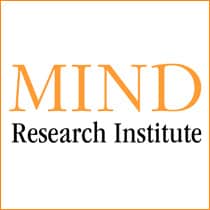Education Leaders Talk Blended Learning & STEM at Edtech Symposium

Tom Vander Ark kicked off the MIND Research Institute‘s annual symposium, Learning Without Boundaries, with in-depth discussion around blended learning and ways we can invent the future of learning. Education leaders shared their hopes and concerns this morning. Many expressed hopes to improve student learning responsibility, increase quality learning time, and extend the school the day with blended learning and education technology.
Yet their challenges are real. Education leaders looking at enacting change in their schools and districts are worried about finding the funding for computer or tablet programs, integrating these tools into the current classroom model, exposing students to information and resources that aren’t age or grade appropriate, and finding the best technology infrastructure.
Vander Ark shares solutions to these issues pointing to some great examples that are already finding success today: Rocketship Education, Riverside Unified School District, and Carpe Diem Schools. He adds, beyond state funding, there’s great solutions in bring your own device policies (BYOD) and combination state and parent funding.
Vander Ark says we can improve the profession of teachers by creating networks and training opportunities with blended learning. Blended learning models like rotation allow students to rotate between working in small groups, one-on-one, on screen and more. With this sequence, teachers can work in extra planning time or collaboration time with other teachers. This has the opportunity to improve the poor retention rates among early teachers.
Matthew Peterson, CTO and Senior Scientist at MIND Research Institute, gave an inside look into the brain science of learning during the afternoon keynote session. Learning actually takes place on a neurological and cellular level, says Peterson. In order to understand how, why and what students learn, we must understand what’s happening in the brain.
Peterson inspired us all with his dedication and drive to reshape the landscape of math learning for educators and students in K-12. MIND’s ST Math has been making waves in schools across the nation, demonstrating how visual math games and dedicated instruction can reshape the way students think and feel about math learning. Peterson concludes, there’s a clear path to get every student proficient in math and we’re on our way to achieving it.
For more, check out the buzz on Twitter under the hashtag #JiJiMath.
MIND Research Institute is a Getting Smart Advocacy Partner.



0 Comments
Leave a Comment
Your email address will not be published. All fields are required.